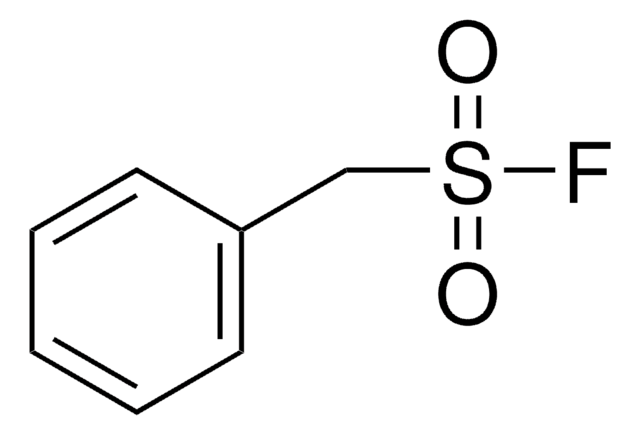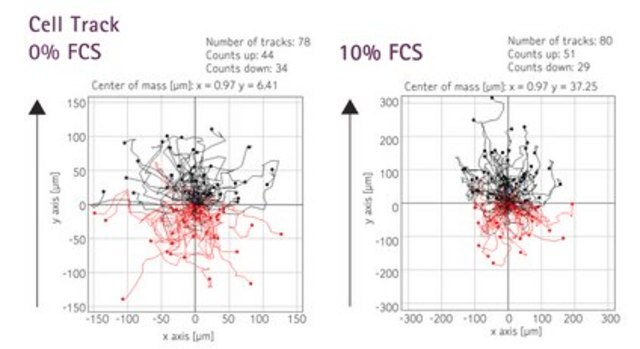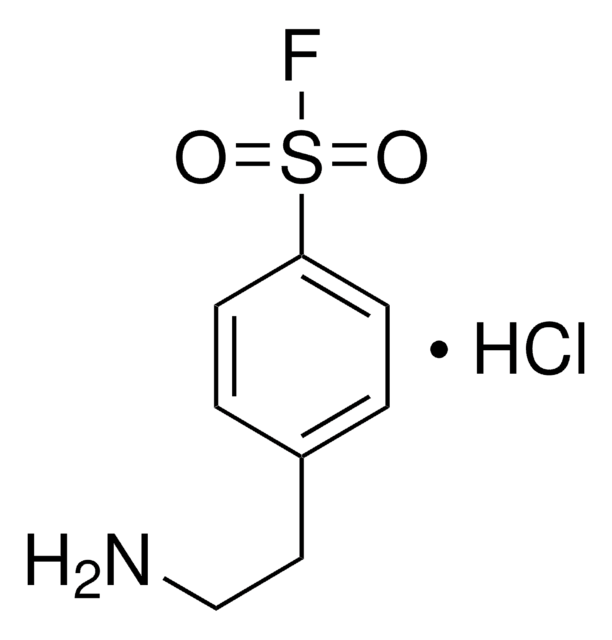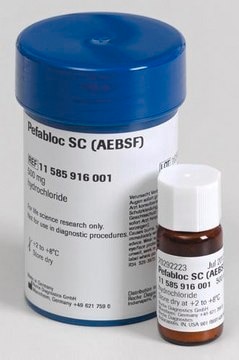178281
p-APMSF, Hydrochloride
Alternative to DFP and PMSF.
Synonym(s):
p-APMSF, Hydrochloride, p-Amidinophenylmethylsulfonylfluoride, HCl
Sign Into View Organizational & Contract Pricing
All Photos(1)
About This Item
Recommended Products
Quality Level
assay
≥97% (HPLC)
form
solid
manufacturer/tradename
Calbiochem®
storage condition
OK to freeze
desiccated
color
white
solubility
water: 25 mg/mL
shipped in
ambient
storage temp.
2-8°C
InChI
1S/C8H9FN2O2S.ClH/c9-14(12,13)5-6-1-3-7(4-2-6)8(10)11;/h1-4H,5H2,(H3,10,11);1H
InChI key
KHLLRHIUKOJXLL-UHFFFAOYSA-N
General description
Alternative to DFP and PMSF. An irreversible inhibitor of trypsin-like serine proteases. Inhibits trypsin and thrombin in equimolar concentration. Acts on C1r, C1s, Factor Xa, and plasmin, requiring a 5- to 10-fold excess for complete irreversible inhibition. Inhibitory activity is approximately 1000-fold greater than that of PMSF.
An alternative to DFP and PMSF. Specific irreversible inhibitor of trypsin-like serine proteases. Inhibits trypsin and thrombin in equimolar concentrations. Acts on C1r, C1s, Factor Xa and plasmin, requiring a 5- to 10-fold excess for complete irreversible inhibition. Inhibitory activity is approximately 1000-fold greater than that of PMSF. Stability is pH dependent: t½ = 20 min at pH 6.0; 6 min at pH 7.0; 1 millisecond at pH 8.0.
Biochem/physiol Actions
Cell permeable: no
Primary Target
trypsin-like serine proteases
trypsin-like serine proteases
Product does not compete with ATP.
Reversible: no
Warning
Toxicity: Standard Handling (A)
Reconstitution
Unstable in solution; reconstitute just prior to use.
Other Notes
Cole, T.C., et al. 1989. Biochim. Biophys. Acta 990, 254.
Laura, R., et al. 1980. Biochemistry19, 4859.
Laura, R., et al. 1980. Biochemistry19, 4859.
Legal Information
CALBIOCHEM is a registered trademark of Merck KGaA, Darmstadt, Germany
wgk_germany
WGK 3
flash_point_f
Not applicable
flash_point_c
Not applicable
Certificates of Analysis (COA)
Search for Certificates of Analysis (COA) by entering the products Lot/Batch Number. Lot and Batch Numbers can be found on a product’s label following the words ‘Lot’ or ‘Batch’.
Already Own This Product?
Find documentation for the products that you have recently purchased in the Document Library.
Our team of scientists has experience in all areas of research including Life Science, Material Science, Chemical Synthesis, Chromatography, Analytical and many others.
Contact Technical Service





